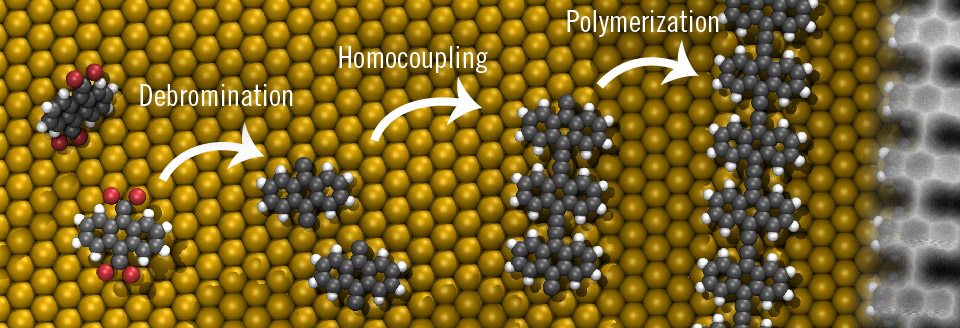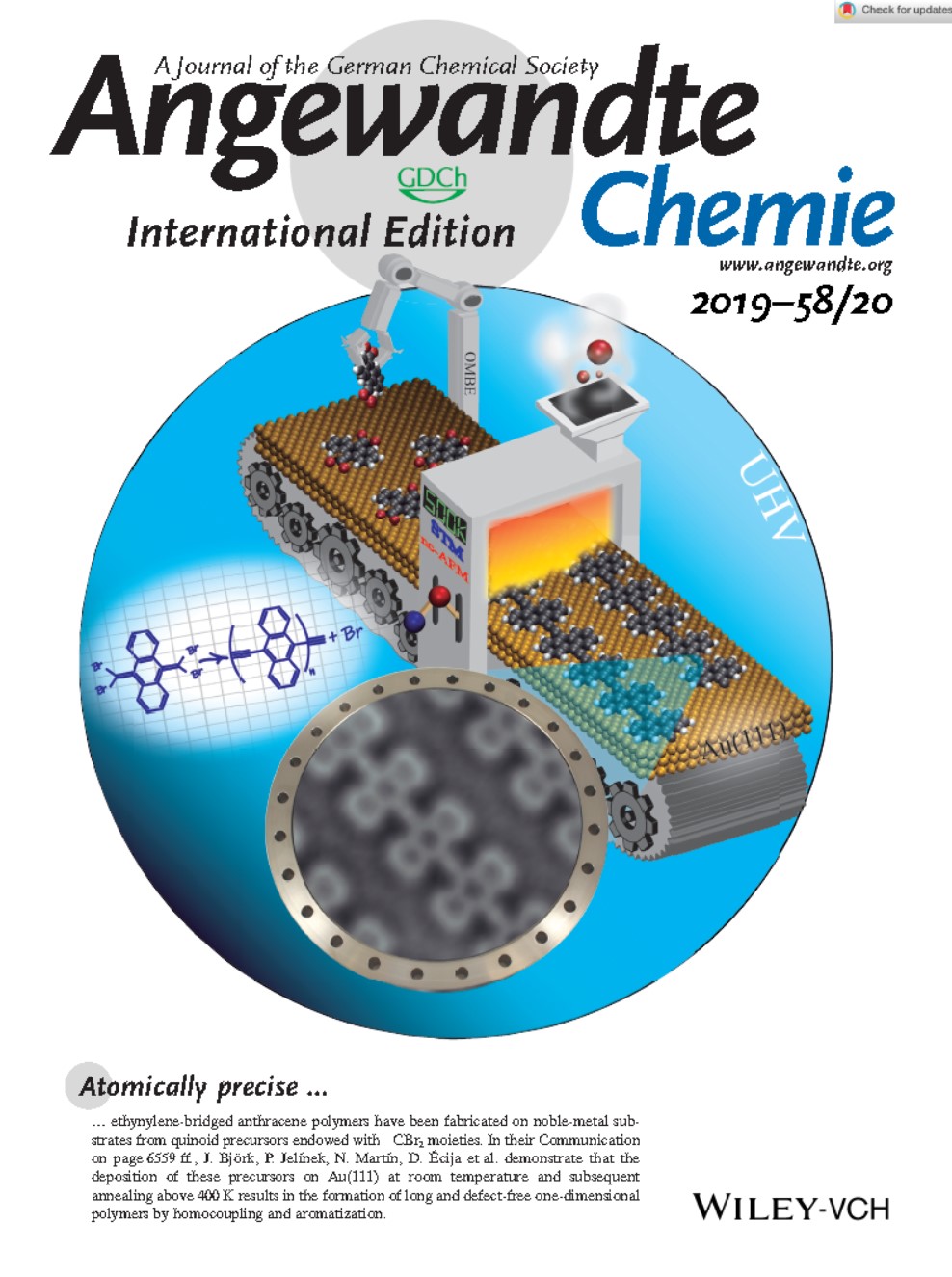A ground-breaking chemical protocol: on-surface synthesis of acene polymers
18.03.2019
 |
|
On-surface synthesis of ethynylene bridged (-C≡C-) anthracene polymers on pristine gold. |
A new chemical protocol introduces the on-surface design of anthracene-based polymers with a small electronic bandgap, interesting for organic optoelectronics.
The optical and electronic properties of π-conjugated polymers have placed them in the paradigm for organic electronics. Despite the great advances in the field, the poor solubility of many of these compounds precludes their synthesis by standard chemistry methods, such is the wet chemistry. For example, acene compounds (fused benzene rings in a rectilinear arrangement) present a great potential for plastic electronics, but the design of high-quality conjugated polymers based on acene building units has not been fully achieved to date. Herein, on-surface synthesis has become a powerful tool to design with atomistic precision a variety of nanomaterials.
In the recent publication in Angewandte Chemie Int. Ed., researchers led by professors David Écija, Nazario Martín, Pavel Jelínek and Jonas Björk have reported an extensive study of the on-surface synthesis of poly(p-anthracene ethynylene) molecular nanowires on a gold surface, using scanning tunneling microscopy (STM), atomic force microscopy (AFM) and density functional theory (DFT). The novel chemical approach is based on the dehalogenation, homocoupling and aromatization of a quinoid anthracene precursor endowed with =CBr2 moieties. Annealing to 400K enabled the debromination and, after diffusion of the species, long molecular wires up to 30 nm without defects were formed. The scanning probe microscopy revealed the spatial distribution of the valence and conductance edges, resulting in a low band gap of 1.5 eV, confirmed by the DFT calculations.
Nobody up to date succeeded in polymerizing the acene family. This challenge was overcome by combining approaches from organic chemistry (Prof. Nazario Martín) and on-surface chemistry (Prof. David Écija). In the synthesis, suitable precursor species were equipped with appropriate functional groups to steer the formation of ethynylene bridges (-C≡C-). This elegant coupling reaction has few side-products, and allows the detailed atomistic study of the molecular structure. Notably, its low band gap sets the structure as an interesting nanomaterial for optoelectronic devices. Further steps will be necessary and are in progress to study the optimal transference of the polymers onto functional devices.
Écija remarks that “The study is exhaustive; includes not only the synthesis of a novel branch of polymers, we also elucidated its electronic properties along the macromolecule”. The authors are confident in the new possibilities arising: “We believe this breakthrough will bring new possibilities for the development of plastic electronic devices, and now there is much work ahead” Santos, coauthor of the open access publication, says. For example, the transference of porous graphene to other substrates has been recently demonstrated which opens new avenues to bring these new nanomaterials to promising applications.
This work is a multidisciplinary collaboration between scientists from IMDEA Nanociencia (Madrid), the Complutense University of Madrid, The Regional Centre of Advanced Technologies and Materials (Czech Republic), The Czech Academy of Sciences, and the Linköping University. David Écija and Nazario Martín are researchers at IMDEA Nanociencia, a Severo Ochoa Centre of Excellence. The work of Écija and his group is focused on physical-chemistry and molecular nanoscience at interfaces. David Écija was awarded recently with the ERC Consolidator Grant for his project ELECNANO, that will design electrically tunable functional nanomaterials incorporating lanthanides. Nazario Martín (IMDEA Nanociencia and Complutense University of Madrid) has currently a ERC Advanced Grant (CHIRALLCARBON) and his research is focused on the chemistry of carbon nanostructures. The work has been co-funded by Martín’s and Ecija’s “Synergetic Project” QUIMTRONIC of the Regional Government of Madrid and the ERC project ELECNANO.
Open Access Publication:
Sánchez-Grande et al. On surface synthesis of ethynylene brided anthracene polymers. Angewandte Chemie International Edition, 2019. DOI: 10.1002/anie.201814154
Contact:





